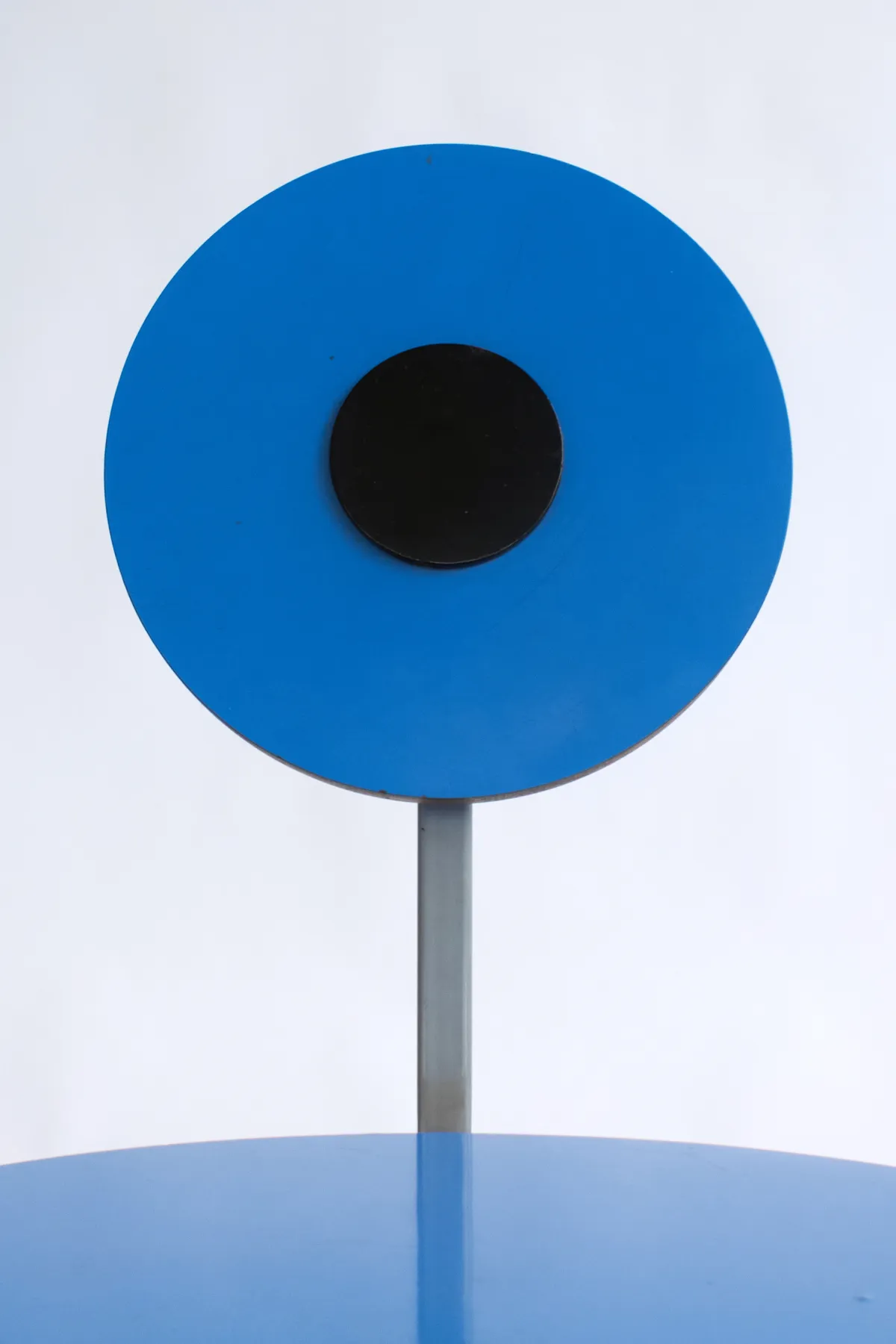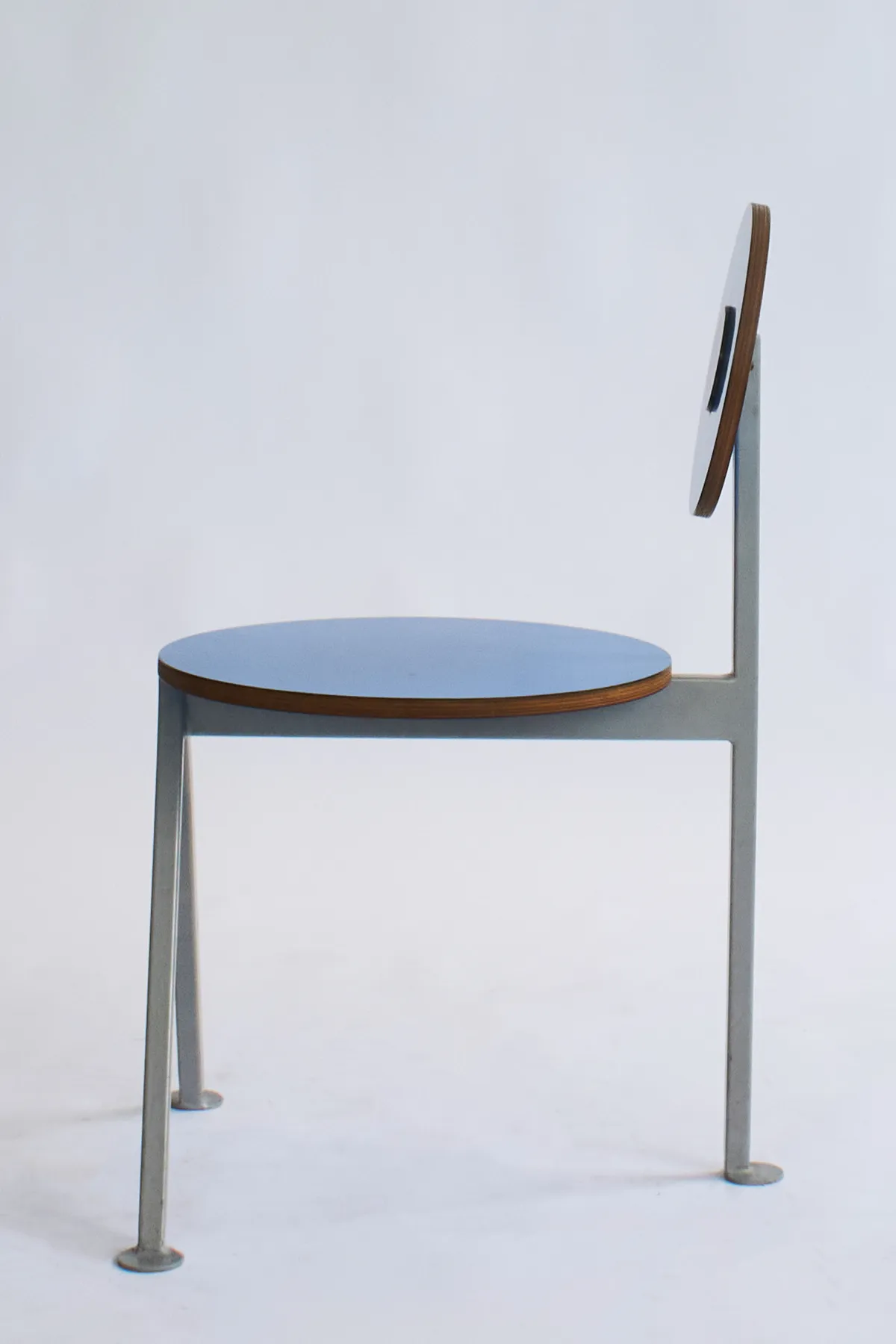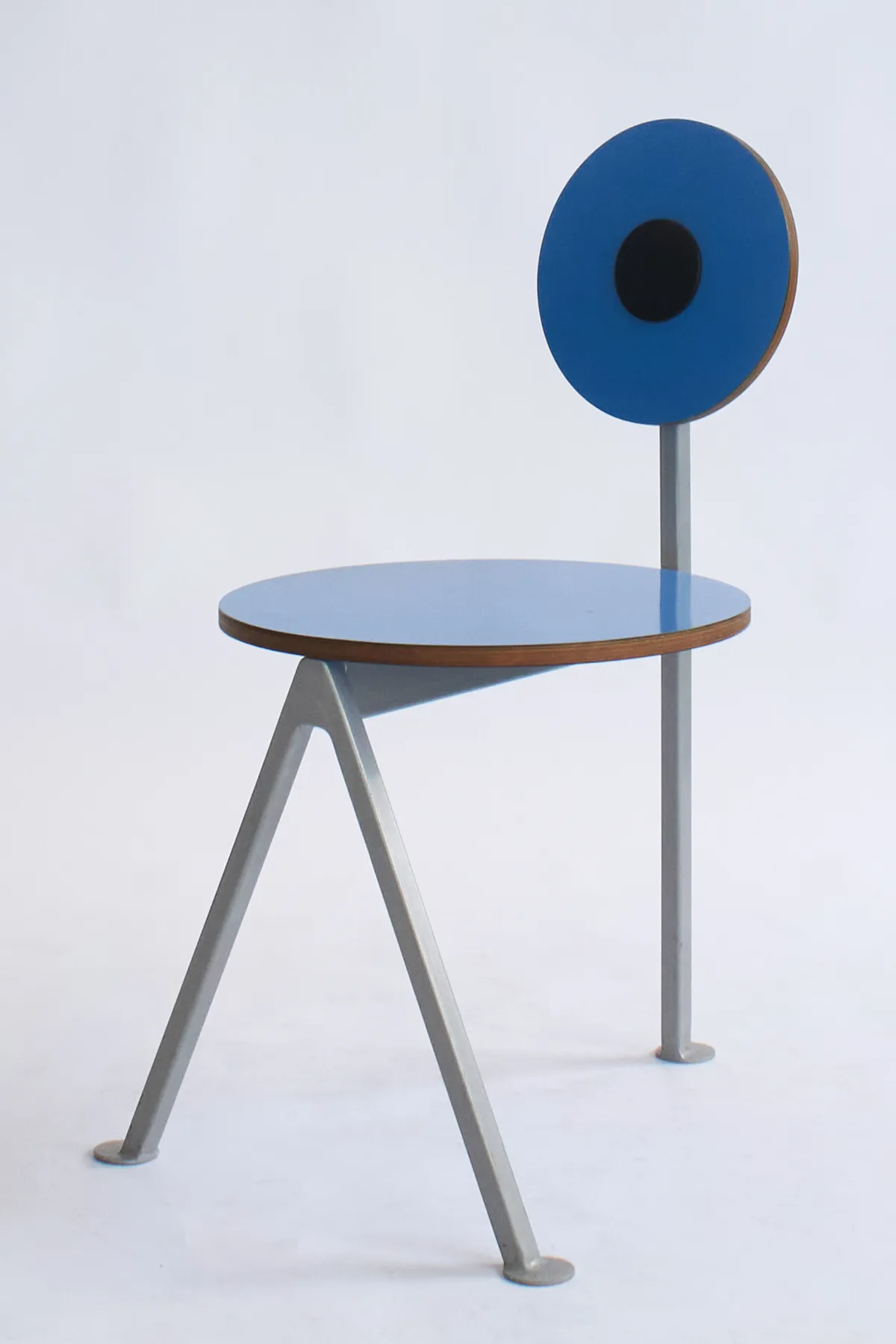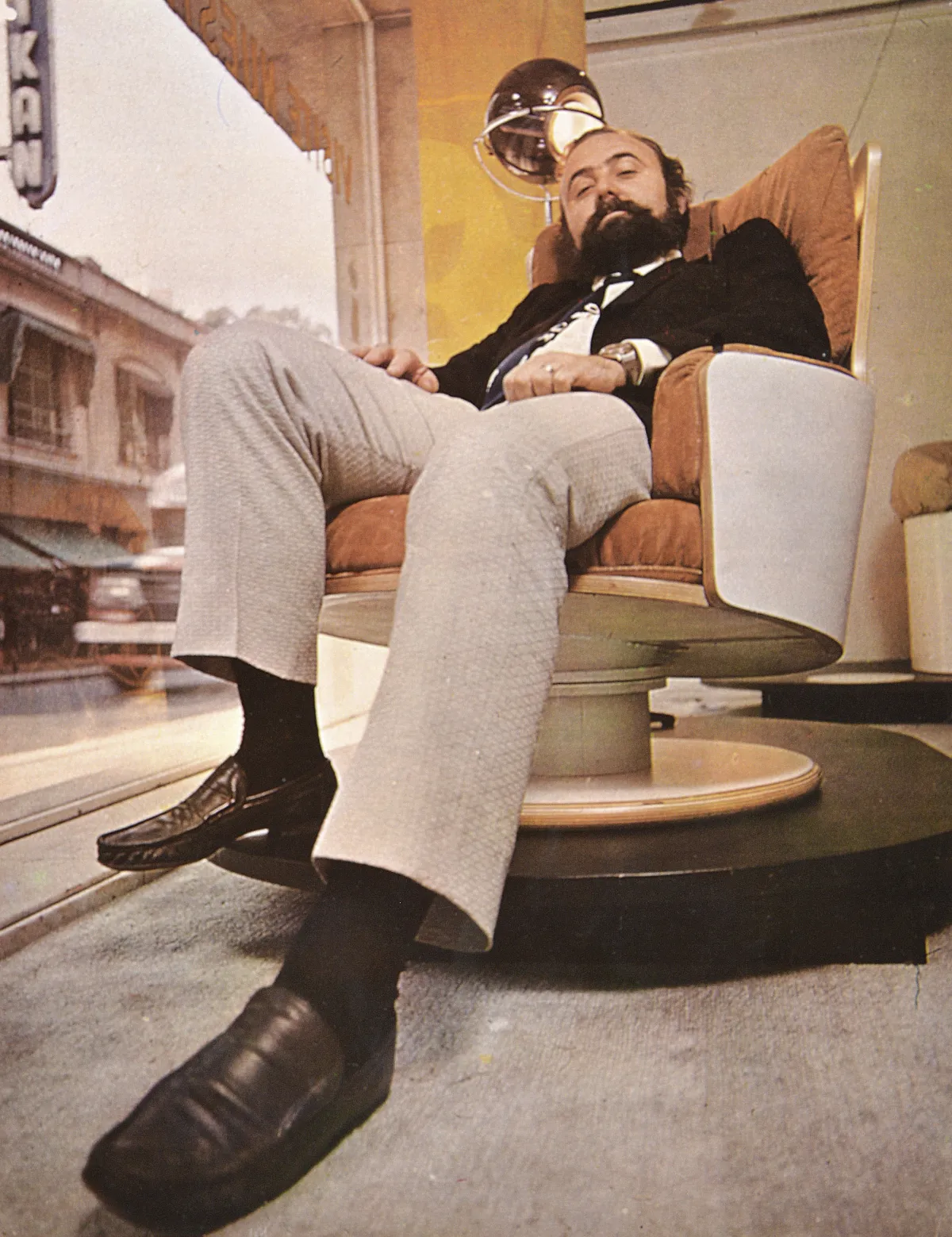
Trigamba
Blanco created numerous prototypes as a way of exploring the universe of seating: chairs, armchairs, stools, loungers. In his comparative studies with international pieces and trends, he establishes a dialogue with the “First” chair (1983) by Michele de Luchi, belonging to the Italian boom of the Memphis movement. Blanco says in the book “Diseño Argentino Permanencias” from 2019: “Both are formally stripped down but with their components, arranged in spatial positions. The legs of the Trigamba and the arm-backrest of the First are the characteristic elements. In the First the technical possibility of a country like Italy is noted in the required welding of the arm and in the other case, the technical synthesis, by using square tubing in the Trigamba. In this last chair I add the possibility of sitting backwards (as is customary in some cases) expanding its functionality. Formally, the use of circular or spherical elements, with rigorous geometry, gives it a thematic link as well as the use of a similar color.”
- Authorship — Ricardo Blanco
- Object Type — Chair
- Material and Technique — Phenolic and iron
- Measurements — 44 x 50 x 78 cm
- Origin — Argentina
- Dating — 1980
- Condition — Original







